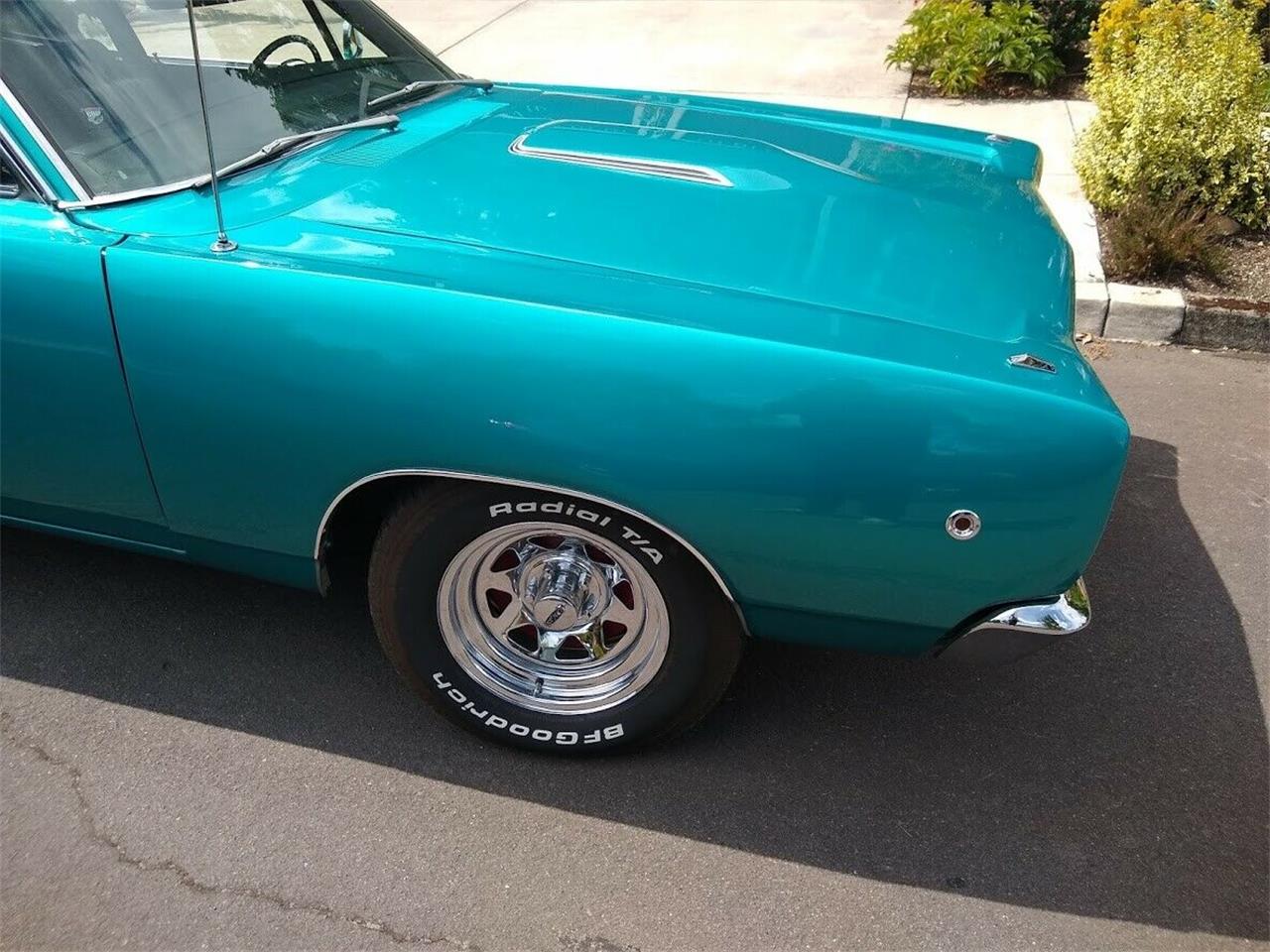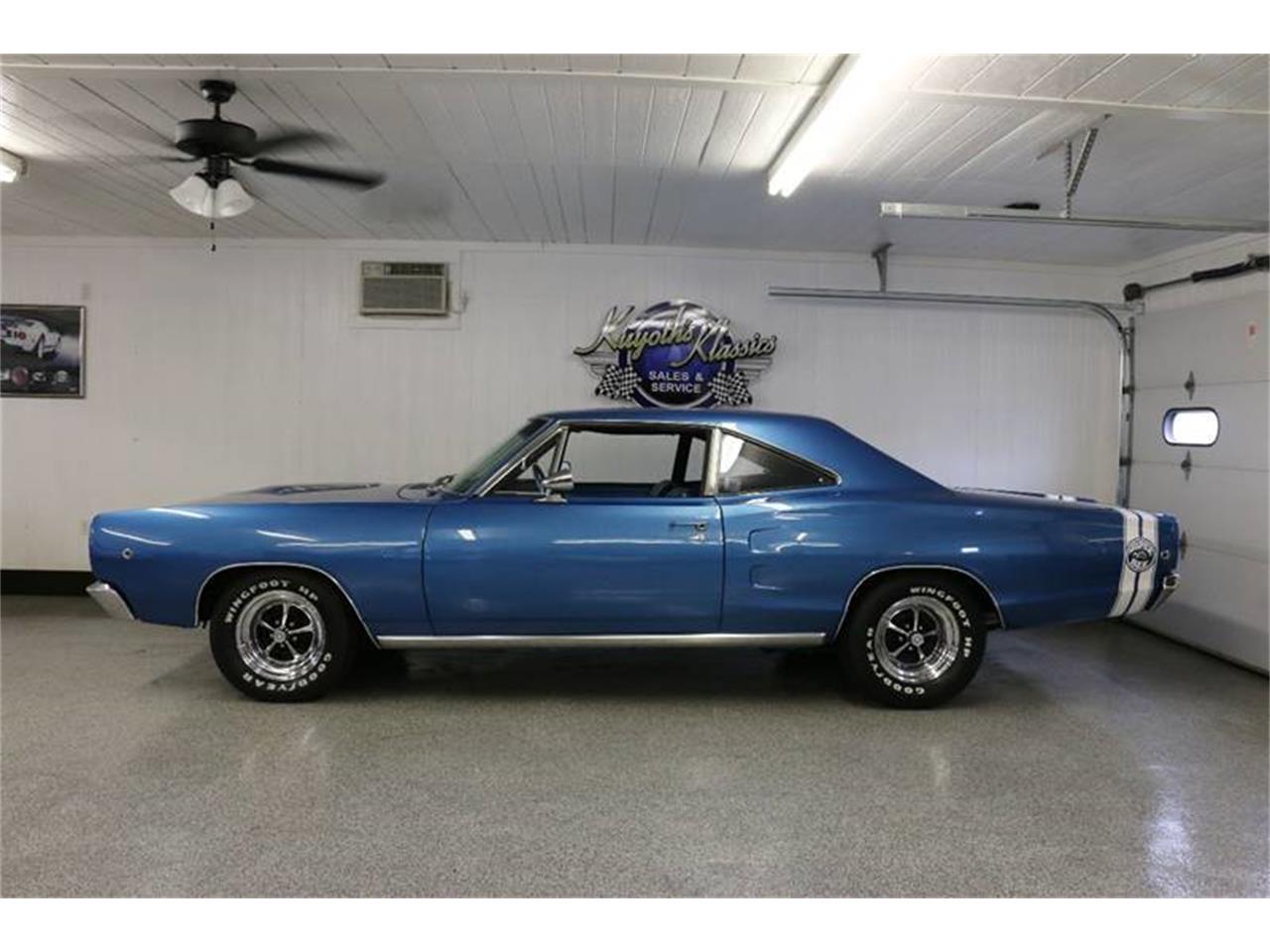

The odometer shows 46,176 miles, though true mileage is unknown.Ī non-original, period-correct 426ci Hemi V8 has been fitted under the hood, and is coupled to the numbers matching 4-speed manual transmission and Sure Grip rear end. There is an AM/FM radio currently installed, though the correct AM radio is included with the sale.Īll instrumentation, lighting, and functions are said to be in good working order including the optional tachometer seen above. The interior has been left as original as possible with all materials and trim in place. Inside, the Black vinyl upholstery appears to be well-kept with the seller mentioning a 1″ tear in the side of the driver’s seat cushion as seen above. Tires are Firestone Redline Wide Ovals with good tread remaining. This car wears black powder coated 15×6″ Kelsey Hayes JK wheels specific to Hemi-powered cars with 1968 NOS Hemi dog-dish type hubcaps. A few minor paint imperfections are noted, though cosmetics appear to be in very good order overall.
1968 SUPER BEE PROFESSIONAL
A833 4-speed manual transmission (Hurst)Ī professional repaint in correct Burgundy Metallic appears to have been applied to a high-standard with good shine over the straight body work.This Super Bee left the Lynch Road, Michigan factory on Wednesday with the following: Of those, 31 were fitted with a 4-speed manual from the factory, and this example is the only one known to have been painted Burgundy Metallic. This rare Dodge is now offered by the consigning dealer with a clean Texas title.ġ968 was the debut year of the Super Bee, and 125 were built in Hemi trim. This car was inspected by Galen Govier in November 2011, and the included multi-page report verifies this as a factory Super Bee 426 Hemi. The car received a recent repaint in its correct factory color and was treated to an engine rebuild in August 2015 as detailed below. According to the seller, this is the only 426 Hemi 4-speed finished in Burgundy Metallic known to exist, and it retains stock drivetrain and major mechanical components. This might be a great candidate for a restoration as far fewer Super Bees turn up at Mopar events than do Road Runners.This 1968 Dodge Super Bee 426 Hemi is a documented J-code car running a period correct 426ci Hemi mated to the original numbers-matching 4-speed manual transmission and Sure Grip rear end. The rather basic interior “needs TLC” and that would begin with a thorough cleaning. A thorough inspection of the sheet metal and undercarriage would be advised with any purchase of this nature.
1968 SUPER BEE SERIES
A series of large cracks in the paint is present and could be reflective of poorly applied body filler below. The paint is peeling, which is an understatement when looking below the C-pillar on the passenger side. The biggest problem with this Dodge may be the body. It’s said to run “good” but a little more information would be nice. The seller’s ’68 Super Bee has the 383 with an automatic transmission, but no mention is made of whether they’re original to the machine. A 383 cubic inch V8 was standard equipment, and both cars could be ordered with the bigger 440 or the 426 Hemi. While the Super Bee didn’t have a horn that buzzed like the Road Runner’s that beeped, they were similar vehicles. But Plymouth stayed the course for a few more years.Īpparently, the muscle car buyers who arrived at Dodge dealerships during the late 1960s were far more taken with the Charger, which the Chrysler division had no trouble selling plenty of. Whereas more than 177,000 Road Runners left the assembly line during that period, only 56,000 Super Bees were produced before Dodge backed away. Perhaps Plymouth did a better job of marketing their car because Road Runner sales were more than triple those of the Dodge’s during the four years the Super Bee was on the market (1968-71). Take the mid-size B-body platform of either the Coronet or Belvedere, put a big V8 engine under the hood, provide limited amenities, and apply some gimmicks here and there (name, colors, horn). The concept of the Super Bee and Road Runner was similar. From Staunton, Virginia, this Mopar find is available here on craigslist for $29,000.

This first-year edition of the latter needs some cosmetic attention but is said to run great. The hot Plymouth Road Runner hit the scene in ’68 as did the comparable – and often overlooked – Dodge Super Bee. But it was a different kind of car more than a decade earlier. The Pontiac GTO is credited with starting the boom in 1964, but pundits will suggest the Chrysler 300 deserves that honor.

1968 SUPER BEE FULL
By 1968, the mid-size muscle car craze was in full swing.


 0 kommentar(er)
0 kommentar(er)
